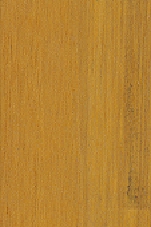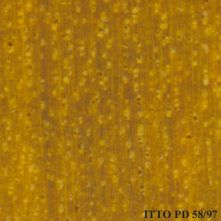
BANGKAL (Nauclea orientalis)
Trade Name
Bangkal
Scientific Name
Nauclea orientalis (L.) L.
Family
RUBIACEAE
Common Names
Gempol (Indonesia); Bengkal (Indonesia); Bangkal; Tum kham (Thailand); Klepu pasir (Indonesia); Bulala (Philippines); Yellow cheesewood (Papua New Guinea); Prung (Myanmar); Kayu mas (Indonesia); Mau-kadon (Myanmar); Kan lueang (Thailand); Krathum khlong (Thailand); Mambog (Philippines)
Scientific Name Synonyms
Sarcocephalus undulatus Miq; Sarcocephalus cordatus Miq.; Nauclea coadunata Roxb. Ex. J.E. Smith; Cephalanthus orientalis L.
Description Of The Tree
Botanical Description
It is a large tree reaching heights of about 20 m and 80 cm in diameter. The buttresses are absent. The bole is up to 9 m long, cylindrical and straight.
Natural Habitat
Nauclea occurs in lowland an hill forests, sometimes up to 1,100 m of altitude, often along stream and swampy locations.
Non Timber Uses
A yellow dye can be obtained from the root bark.
Wood Identification
Anatomic Description Of Wood
Wood diffuse porous. Occasionally vessels exclusively solitary (over 90%). Occasionally vessels with colored deposits. Vestured pits. Vessels per mm2 5 to 20. Occasionally vessels per mm2 less than 6. Simple perforation plates. Vessel-ray pits similar to interve Apotracheal axial parenchyma diffuse and/or diffuse in aggregates. Occasionally paratracheal axial parenchyma scanty and/or vasicentric. 5 to 8 cells per parenchyma strand. Occasionally rays more than 10 per mm (abundant). Ray height more than 1 mm. Body ray cells procumbent with over 4 rows of upright and/or square marginal cells (Kribs-I). Body ray cells procumbent with mostly 2 to 4 rows of upright and/or square marginal cel Fibers with distinctly bordered pits.
-
 Wood Macro Photo Tangential Plane
Wood Macro Photo Tangential Plane
-
 Wood Micro Photo Of Transversal Section
Wood Micro Photo Of Transversal Section
Availability
Cites Status
Unrestricted
General Wood Description
Odor
It has no taste or smell.
Color
The sapwood is often undefined, pale yellow or white. The heartwood varies from whitish-orange buff to saffron.
COLOR INDEX (1=Black, 7=Light yellow,white)
5
Grain
The grain is slightly interlocked.
Texture
Fine texture is reported in this species.
Luster
The wood surface is dull.
Natural Durability
The wood is fairly resistant to insect attacks, but susceptible to dry wood termites. The heartwood is moderately resistant to blue stain.
Natural durability index (1= Very high durability, 7=Vey low durability)
6
Silica Content
Silica Content: It is non-siliceous. Silica Value: 0
Resistance To Impregnation
The sapwood is permeable to impregnation, the heartwood is usually permeable but may be moderately resistant in some instances.
Wood Physical Properties
Basic Density or Specific Gravity (O.D. weight/vol. green) (g/cm³)
0.49
Air-dry Density (Weight and volume at 12%MC) (g/cm³)
0.54
Total shrinkage Tangential (Saturated to 0%MC) (%)
5.8
Total shrinkage Radial (Saturated to 0%MC) (%)
3.5
Drying Defects
Ease of Drying: Seasoning is generally easy and rapid with little degrade. Drying Defects: Risk of moderate warping. Kiln Schedules: Kiln drying is fairly rapid under moderate schedules.
Dimensional stability ratio (Total Tangential Shrinkage %/Total Radial Shrinkage %)
1.6
Wood Chemical Properties
Wood Mechanical Properties
Workability
Sawing
N. orientalis saws easily.
Machining
Wood processing is reported to be easy.
Moulding
Molding operations are reported to be easy.
Turning
30
Finishing
This species is reported to give a good finish.
REFERENCED USES
End Uses Summary
HOUSING GENERAL, flooring, shutter boards, FURNITURE AND CABINETS, cabinets, PLYWOOD AND VENEER, TURNING, TOOLS, PACKING, OTHER AND MUSICAL INSTRUMENTS, handicrafts, matches, moldings
General Housing
- 10 - Silica in Timbers
Flooring
- 14 - Handbook of Hardwoods
Shutter Boards
- 20 - Prospect: The wood database
Furniture Cabinets
- 21 - Tropical timbers of the world. Part III-Southeast Asian and Oceanian Species.
Cabinet
- 24 - Empire Timbers
Panels, Veneers
- 25 - Directory of Timber Trade Malaysia
Turning
- 30 - Embassy of Honduras in Japan
Tools
- 42 - Utilización Industrial de Nuevas Especies Forestales en el Perú.
Packing
- 45 - Recopilación y Análisis de Estudios Tecnológicos de Maderas Peruanas
Handcraft
- 66 - Maderas latinoamericanas. VII. Caracteristicas anatomicas. propiedades fisicomecanicas, de secado, y tratabilidad de la madera juvenil de Cordia alliodora (Ruiz & Pav. Oken.)
Matches
- 71 - Proprietes physiques et mecaniques des bois tropicaux, premier supplement
Molding
- 79 - Padronização da Nomenclatura Comercial Brasileira das Madeiras Tropicais Amazônicas, Sugestão
Please Provide Information To View Producer Information